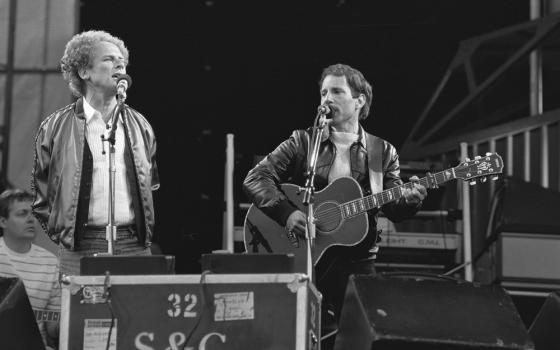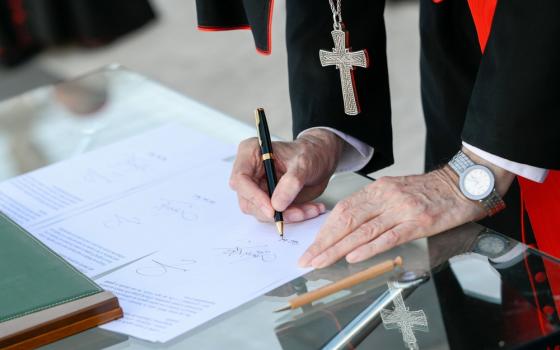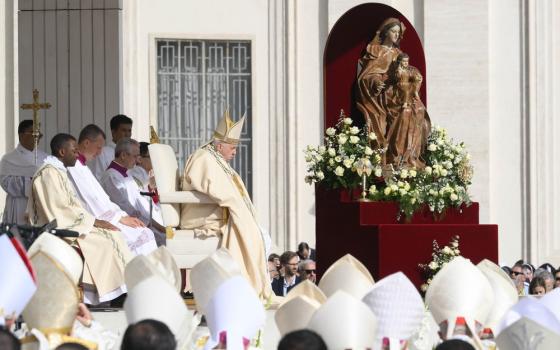VATICAN CITY -- For seven centuries, Eucharistic adoration—praying before an exposed consecrated Communion host—was one of the most popular forms of devotion in the Roman Catholic Church, the focus of beloved prayers and hymns and a distinctive symbol of Catholic identity.
Following the modernizing reforms of the Second Vatican Council (1962-65), the practice fell from favor, especially in Europe and the U.S. But over the last decade, under Popes John Paul II and Benedict XVI, the church has strongly encouraged a revival of the practice.
“No one eat this flesh, if he has not adored it before; for we sin if we do not adore,” Benedict said, quoting St. Augustine, in a 2009 speech at the Vatican.
Next week (June 20-24), the Salesian Pontifical University in Rome will host an academic conference on Eucharistic adoration, where the speakers will include six prominent cardinals, focusing on the rediscovery of the practice.
At the same time, however, some theologians object to adoration as outdated and unnecessary, and warn that it can lead to misunderstandings and undo decades of progress in educating lay Catholics on the meaning of the sacrament.
Eucharistic adoration by the laity originated in the 13th century as a substitute for receiving Communion at Mass, said Monsignor Kevin W. Irwin, dean of the School of Theology and Religious Studies at the Catholic University of America.
At the same time, he said, the church often encouraged a believer’s sense of “personal unworthiness” to receive the sacrament—which Catholics believe to be the body of Christ—so many resorted to so-called “ocular communion” instead.
Eucharistic adoration was also used as a teaching tool to reaffirm the doctrine of the “real presence” of Christ in the Eucharist, said the Rev. Richard P. McBrien, a noted theologian at the University of Notre Dame.
For instance, McBrien said, devotion grew during the 16th- and 17th-century Counter-Reformation, in response to the arguments of some Protestant Reformers that the Eucharist was merely a symbol, not the actual body of Christ.
In the days when priests celebrated Mass in Latin with minimal participation by the congregation, the hymns and prayers associated with adoration gave lay Catholics an opportunity for public worship, Irwin said.
Liturgical reforms after Vatican II greatly increased the laity’s participation at Mass, which Irwin said satisfied the “felt need for participation in public prayer.” Irwin called that an “underlying reason” for the practice’s decline.
In his final encyclical, Ecclesia de Eucharistia (2003), John Paul decried the rise of a “very reductive understanding of the Eucharistic Mystery” that discourages adoration. He and Benedict have unambiguously endorsed the practice.
In 2005, according to Vatican statistics, there were about 2,500 chapels around the world—including 1,100 in the U.S.—that offered so-called “perpetual” round-the-clock adoration. Many other parishes now offer “holy hours,” when the consecrated host is exposed for silent prayer or for services that include readings and hymns.
Adoration is also central to the Catholic Charismatic Renewal, one of the church’s most dynamic and fastest-growing movements, especially in the developing world.
American college students have proven particularly receptive to the revival of Eucharist adoration. Catholic University’s student chapel regularly draws 150 or more to its two weekly holy hours of adoration, according to the campus chaplain, the Rev. Jude DeAngelo.
“There is somewhat more of an intimacy” in prayer before the exposed host, said Brett Garland, a CUA undergraduate from Ohio who’s majoring in theology and religious studies. “There’s a difference, too, because you know others have come there for that same reason. It’s a call to prayer”
Adoration appeals because it facilitates a “passive spiritual experience,” said Adam Wilson, a spokesman for the Virginia-based Cardinal Newman Society. “It’s a place where our Lord reaches out to the person, with the person having to do nothing but be present to our Lord,” Wilson said.
The Cardinal Newman Society, which promotes a traditional sense of religious identity at Catholic colleges and universities, has sponsored a traveling campus exhibition on “Eucharistic Miracles” and recently released an online video promoting adoration among college students.
Adoration is also appealing, Irwin said, as an “external manifestation of a unique Catholic identity,” much like other traditional practices that have regained popularity, such as meatless Fridays.
Irwin also noted adoration’s appeal to a growing number of divorced and remarried Catholics, who are forbidden to receive Communion but may participate in adoration. In addition, parishes that lack full-time priests are able to offer adoration as a form of communal worship in lieu of Mass.
McBrien acknowledged that some Catholics find adoration “spiritually enriching,” but said many liturgists see it is a “step back into the Middle Ages.”
“It distorts the meaning of the Eucharist,” McBrien said. “It erodes the communal aspect, and it erodes the fact that the Eucharist is a meal. Holy Communion is something to be eaten, not to be adored.”
For that reason, McBrien said, the practice should be “tolerated but not encouraged.”



